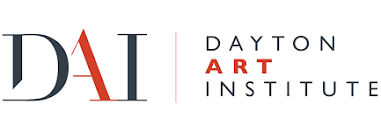Piero Dorazio
Italian, 1927 - 2005
Italian painter. He began painting shortly after World War II. His first works were influenced by Cubism and show a knowledge of the work of artists in Rome who were at that time engaged in the figurative renewal of Italian art. However, the influence of Futurist works and his acquaintance with the Russian avant-garde and De Stijl led Dorazio to adopt an abstract idiom. In 1947, with Giulio Turcato, Pietro Consagra, Carla Accardi, Ugo Attardi (b 1923), Antonio Sanfilippo (1923–80), Mino Guerrini (b 1927) and Achille Perilli (b 1927), he founded the Forma group, declaring himself to be a ‘formalist’ and to have the aim of creating ‘objective abstract forms’ in which ‘the form is both the means and the end’. He made frequent visits to France and to the USA, where he exhibited for the first time in 1950 at the Museum of Non-objective Painting in New York. Here he came into contact with the American abstract painters and with action painting, both of which played a key role in helping him perfect his own form of abstraction. The USA became very important to him, and during the 1950s he made several prolonged visits there, returning to teach at the University of Pennsylvania, Philadelphia, in 1960 and 1963. The period from 1958 to 1963 was in some ways the high point in Dorazio’s artistic development: during this time he produced his series of ‘textures’ and ‘grids’ (e.g. Colle Maggio, 1962; Stockholm, Mod. Mus.). During the 1960s he was frequently invited to participate in abstract exhibitions such as Monochrome Malerei (1960; Leverkusen, Schloss Morsbroich) and contributed to the founding of the groups Zero and Nul, while in Italy he exhibited at numerous Venice Biennali. He continued teaching in the USA until 1970, when he decided to dedicate himself solely to painting.
In the late 1960s Dorazio produced paintings with wide bands of colour; these evolved after 1974 into thread-like and rhythmical forms (e.g. Andromeda, 1976; Milan, Lorenzelli A.), recalling earlier experiments. Colour was his fundamental consideration: he was concerned to free himself from drawing completely in order not to be made a prisoner of its conceptual idealism. To this end, his painted surfaces have neither beginning nor end. Dorazio’s attitude had little in common, however, with the Americans Jackson Pollock, Mark Rothko and Barnett Newman, whose concern with the concrete and physical problems of colour led them to develop a sort of pictorial symbolism. Interviewed in 1983, Dorazio stated that: ‘For me, colour is an instrument, not a means of expression: it is a means between myself and something else; I am not colour, and I do not personify it as Pollock did.’ For Dorazio, instead, it was painting as a language that was of prime importance. Allied to this was Dorazio’s notion of the enduring nature of the problems of paintings. Such a notion should not of course be interpreted as simple traditionalism but rather as an attempt to examine the universal pictorial structure of art above and beyond its historical context. Individual and traditional elements were deliberately made to co-exist in Dorazio’s work, although he recognized that the interpretation of tradition was a deliberate and rational activity through which the artist could become conscious of his own art. Decoration and pattern, therefore, came to be important to Dorazio as pure, timeless, impersonal elements with a potentially infinite rhythm, built from colour and without need of symbolic or narrative support.
Marco Meneguzzo. "Dorazio, Piero." In Grove Art Online. Oxford Art Online, http://www.oxfordartonline.com.proxy.lib.fsu.edu/subscriber/article/grove/art/T023367 (accessed April 10, 2012).
Person TypeIndividual
American, School: Color-field painting, 1924 - 2010













